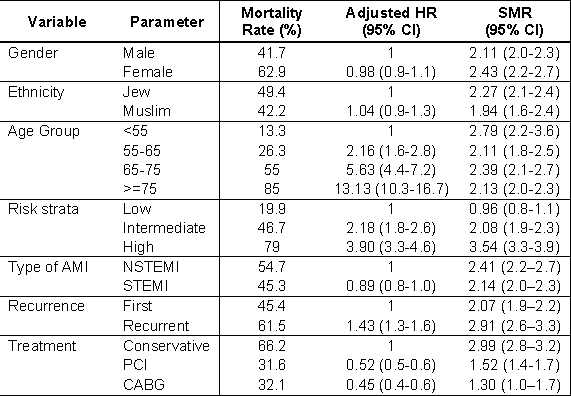Background: Data on long-term survival following acute myocardial infarction (AMI) in unselected “real life” patients as compared with matched general population (GP) is scarce.
Methods: a retrospective analysis of 2,671 post-AMI consecutive patients discharged from a tertiary medical center throughout 2002-2004. The primary outcome: 10-years post-discharge all-cause mortality. The cohort was divided to 3 equal-sized strata based on risk for mortality. Standardized mortality rates (SMR) were calculated as: observed mortalities/expected mortalities in age-, gender- and ethnicity-matched GP.
Results: Overall 10-year mortality rate was of 2.2 (95%CI: 2.10-2.38; p<0.001) times higher compared with matched GP. Adjusted relative risk for mortality (Hazard ratio) and SMRs were higher in Jews vs. Muslims, females vs. males (only in 1) throughout all 10-years of follow up. Disparities in the annual SMRs between the three risk strata are greatest in the first year after discharge.
Conclusions: Hospital survivors of AMI are at increased risk for mortality compared with matched GP for at least 10-years (especially the first year) following AMI.


